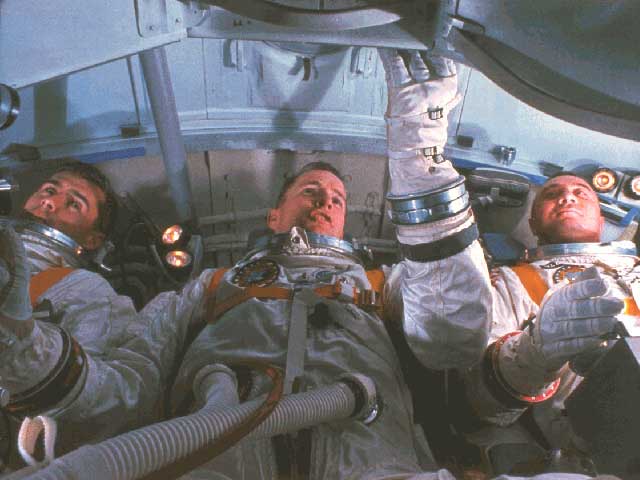
Almost five decades have now passed since one of the worst tragedies in the history of U.S. human space exploration. Alongside the loss of Challenger during ascent and the demise of Columbia during re-entry, the fire which tore through the command module of Apollo 1, during a “plugs-out” systems test on the evening of 27 January 1967, killing astronauts Virgil “Gus” Grissom, Ed White, and Roger Chaffee, played a pivotal role in refocusing awareness of the inherent hazards of launching humans away from the Home Planet and fundamentally reshaped America’s future goals in space. Forty-eight years later, it still remains remarkable that from the ashes of tragedy, the NASA family was able to recover, rebuild, and—fulfilling President John F. Kennedy’s pledge—land a man on the Moon by the decade’s end.
Today, Pad 34 stands as a gaunt concrete and steel hulk. Overgrown by bushes, weeds and a few wild pepper trees, it steadily decays in the salty Atlantic air. A faded “Abandon in Place” sign adorns one of its legs, whilst close to its base are a pair of plaques, memorializing one of the darkest days in NASA’s history. The first reads simply “Launch Complex 34, Friday 27 January 1967, 1831 Hours” and dedicates itself to the first three astronauts of Project Apollo. The second pays tribute to their “ultimate sacrifice” that January day, long ago. Close by are a trio of granite benches, one to honor Grissom, White, and Chaffee.
Each year—and today will likely be no exception—NASA invites the families of the three men to visit the spot and reflect upon the tragedy which engulfed them with horrifying suddenness that Friday. To pause at Pad 34 and consider its significance is to consider the astonishing ability of Project Apollo to rebound from such a tragedy and plant human bootprints in lunar dust, just 30 months later.
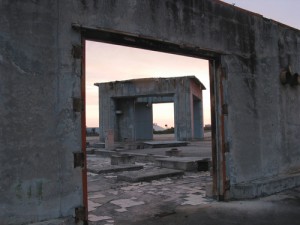
Yet the “Block 1” version of the Apollo spacecraft, in the mind of both Grissom and his backup, Wally Schirra, was a sloppy and unsafe machine. Both men had spent months overseeing poor performance and low standards on the part of prime contractor North American, and, by the fall of 1966, just months before the launch of Apollo 1, hundreds of technical problems remained unresolved: a faulty glycol pump in the environmental control system, leaky thrusters, coolant glitches, bad wiring, and inadequate software, to name but a few. Grissom’s crew was so angry that they prepared a mocking photograph of themselves, heads bowed in prayer over a model of their spacecraft. “It’s not that we don’t trust you,” Grissom scornfully explained, “but this time, we’ve decided to go over your head!” On 22 January 1967, shortly before flying to the Cape for a launch pad test, he plucked a lemon from a tree in his Houston backyard, flew it to Florida in his luggage, and hung it over the Block 1 spacecraft’s hatch.
To be fair, North American had faced their own technical challenges. NASA had mandated that the Apollo command module should operate a pure oxygen atmosphere—an extreme fire hazard, admittedly, but infinitely less complex than trying to implement an oxygen-nitrogen mix, which, if misjudged, could suffocate the men before they even knew about it. In space, the cabin would be kept at a pressure of about a fifth of an atmosphere, but from ground tests would be pressurized to slightly above one atmosphere. This would eliminate the risk of the spacecraft imploding, but at such high pressures there remained the danger that anything which caught fire would burn almost explosively. At an early stage, North American objected to the use of pure oxygen, but NASA, which had employed it without incident on Mercury and Gemini, overruled them.
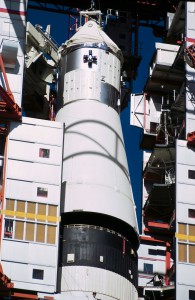
The choice of pure oxygen had not been made lightly. NASA knew that a two-gas system, providing an Earth-like mixture of 80 percent nitrogen and 20 percent oxygen, pressurized to one bar, would reduce the risk of fire. Moreover, a mixture of this type avoided many other troubles associated with pure oxygen—eye irritation, hearing loss, and a clogging of the chest, for example—but the complexities of building such a system threatened to make it prohibitively heavy. The astronauts’ space suits complicated the issue yet further. “To walk on the Moon,” wrote Deke Slayton, then-head of the Flight Crew Operations Directorate (FCOD), in his autobiography, Deke, “you needed to get out of the spacecraft … and with a mixed-gas system you’d have to pre-breathe for hours, lowering the pressure and getting the nitrogen out of your system so you didn’t get the bends. Of course, if there was a real emergency and you had to use the suit, you’d really have been in trouble.”
Other worries surrounded Apollo’s hatch: a complex device which actually came in two cumbersome pieces: an inner section, which opened into the command module’s cabin, overlaid by an outer section. North American wanted to build a single-piece hatch, fitted with explosive bolts, but NASA felt that this might increase the risk of it misfiring on the way to the Moon. By adopting an inward-opening hatch, cabin pressure would keep it tightly sealed in flight … but notoriously difficult to open on the ground. As the hands of fate turned on Apollo 1, pure oxygen and an immovable hatch, coupled with a mysterious ignition source, would spell death for Gus Grissom, Ed White, and Roger Chaffee.
With a pessimistic air of foreboding, the three astronauts crossed the gantry at Pad 34 on the afternoon of 27 January 1967. According to their secretary, Lola Morrow, all three men were unusually subdued and in no mood for the so-called “plugs-out” test. (Morrow herself scornfully referred to Project Apollo as “Project Appalling.”) The previous evening, their backup crew—Wally Schirra, Donn Eisele, and Walt Cunningham—had sat aboard the spacecraft for a “plugs-in” test, with Apollo dependent upon electrical power from ground support equipment and the hatch left open. After emerging from the test, Schirra took Grissom to one side. He hated the Block 1 design. “If you get the slightest glitch,” Schirra told his friend, “get outta there. I don’t like it.”
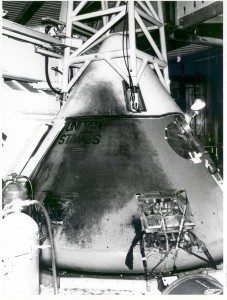
Communications with the nearby blockhouse, manned by astronaut Stu Roosa, caused difficulties from the start. Grissom was so frustrated that he even asked Apollo Spacecraft Program Office (ASPO) manager Joe Shea, at breakfast, to sit in the cabin with them and gain a manager’s perspective of the problems. Shea weighed up the pros and cons of rigging up an extra headset and squeezing himself, in shirtsleeves, into Apollo’s lower equipment bay, but decided against it. Even Deke Slayton considered sitting in the cabin with them, but elected to remain in the blockhouse to monitor the progress of the test.
Grissom took the commander’s seat on the left side of the cabin and quickly became aware of a foul odor—it smelled like sour buttermilk, he said—and technicians scrambled to the spacecraft to take air samples. Nothing was found to be amiss. Roger Chaffee climbed aboard, taking the right-side seat, and Ed White entered last, plopping into the center seat. The command module’s hatch was closed, the Saturn IB boost cover was sealed and pure oxygen was steadily pumped into the cabin.
As the afternoon wore on, niggling problems hindered the test. A high oxygen flow indicator triggered the master alarm, time and time again, and communications with Roosa were so bad that at one point Grissom exploded: “How are we going to get to the Moon if we can’t talk between two or three buildings?” At 4:25 p.m. EST, a problem arose with a live microphone, which could not be switched off. NASA Test Conductor Clarence “Skip” Chauvin later recalled that communications were so bad that he could hardly hear the astronauts’ voices. Eventually, the test was put on hold at 5:40 p.m. Forty minutes later, after more communications headaches, controllers prepared to transfer Apollo 1 to its internal fuel cells … whereupon the countdown was halted, yet again.
Suddenly, and without warning, controllers noticed the crew’s biomedical readings jump. This was a tell-tale indicator of increased oxygen flow in their space suits. At the same time, around 6:30:54 p.m., other sensors registered a brief power surge aboard Apollo 1. Ten seconds later came the first cry from the spacecraft.
It was Roger Chaffee’s voice.
It was just one word.
“Fire!”
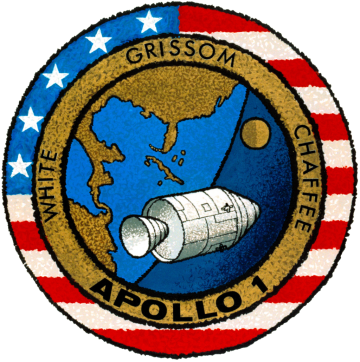
In the windowless blockhouse at Pad 34, Deke Slayton heard Chaffee’s call and glanced over to a monitor which showed the Apollo 1 command module’s hatch window. What normally looked like a dark circle was now lit up, almost white. Frantic calls were now emanating from the spacecraft: “We’ve got a fire in the cockpit,” yelled Chaffee. “Let’s get out. We’re burning up!” Finally, there came a blood-curdling scream.
On the first floor of Pad 34, technician Gary Propst could clearly see Ed White on his monitor. The astronaut’s arms were raised over his head, fiddling to open the heavy two-piece hatch. Propst could not understand why the men did not simply blow the hatch, little realizing that its inherent design made it impossible for them to do this. Instead, White had to use a ratchet to laboriously release six bolts spanning the circumference of the inner section of the hatch. Years later, astronaut Dave Scott wrote in his autobiography, Two Sides of the Moon, that during training, he and White weightlifted the hatch over their heads whilst lying supine in their Apollo couches. Now, in the few seconds he had available before being overcome by smoke, White barely had chance to begin loosening the first bolt.
Tragically, it made little difference. In normal conditions, it would require 90 seconds at best, and even the super-fit White had been unable to do it in less than two minutes during training. However, fire was gorging Apollo 1 and the accumulation of hot gases sealed the hatch shut with tremendous force. No man on Earth could possibly have opened the hatch under such circumstances.
Investigators would later discover that the fire began somewhere under Gus Grissom’s seat, on the left side of the cabin, perhaps in the vicinity of some chafed and unprotected wiring. Once sparked in Apollo 1’s pure oxygen atmosphere, it fed hungrily and quickly exploded into an inferno. Other combustible objects—including Velcro pads, nylon nets, polyurethane pads, and paperwork—fanned the flames. The astronauts themselves had taken a Styrofoam block into the cabin to relieve the pressure against their backs, but this exploded like a bomb in the pure oxygen. “At such pressure, and bathed by pure oxygen,” wrote Grissom’s biographer, Ray Boomhower, in Gus Grissom: The Lost Astronaut, “a cigarette could be reduced to ashes in seconds and even metal could burn.”
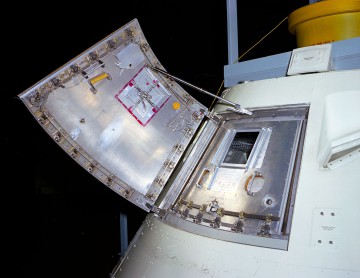
At length, pressures exceeded Apollo 1’s design limits and the capsule ruptured at 6:31:19 p.m., filling the Pad 34 white room with thick smoke. By now, the poisonous fumes had asphyxiated the three astronauts to death. A few meters away, pad leader Don Babbitt sprang from his desk and barked at lead technician Jim Greaves to get the men out of the command module. But it was hopeless. The waves of heat and pressure were so intense that the would-be rescuers were repeatedly driven back. “The smoke was extremely heavy,” Babbitt later recalled. “It appeared to me to be a heavy thick grey smoke, very billowing, but very thick.” None of the pad crew could see far beyond the end of their noses, and they had to run their hands over the outside of the boost cover to find holes into which they could insert tools to open the hatch.
No less than 27 technicians were treated that evening by the Cape’s dispensary for the effects of inhalation. Don Babbitt had to order Jim Greaves outside at one point, lest he pass out. Firefighters eventually opened the hatch and the would-be saviors beheld a hellish scene of destruction: by the flickering glimmer of a flashlight, they could see little but burnt wiring and an incinerated interior. According to firefighter Jim Burch, it took a few seconds before the ethereal calmness convinced them that Grissom, White, and Chaffee were gone. It was 6:37 p.m., five and a half minutes since Chaffee’s initial shout. America’s dream of landing on the Moon was in tatters. Choking over the phone to Deke Slayton, Babbitt could not find the words to describe what he saw.
Slayton and flight surgeon Fred Kelly arrived at the base of Pad 34 minutes later. They realized that it would take hours to remove the dead men from Apollo 1, because the heat had caused everything to melt and fuse together. Moreover, there remained a very real risk that the heat could accidentally trigger the Saturn IB’s escape tower and the pad was cleared of all personnel. Not until the early hours of the 28th were the bodies removed. None of them had suffered life-threatening burns and all had died from asphyxia when their oxygen hoses burned and their suits rapidly filled with poisonous smoke.
In his autobiography, Slayton described it the “worst day” of his career, and even the normally teetotal astronaut Frank Borman admitted that he went out and got drunk after the accident. “I’m not proud to admit it,” Borman once said, “but … we ended up throwing glasses, like a scene out of an old World War One movie.” The wives of the three dead men—Betty Grissom, Pat White, and Martha Chaffee—later sued North American for its shoddy spacecraft. Each received hundreds of thousands of dollars in compensation in 1972.
This is part of a series of articles over the coming days to commemorate the losses of America’s human space program in Apollo 1, Challenger, and Columbia. Tomorrow, Wednesday, 28 January, AmericaSpace will reflect upon the 29th anniversary of the Challenger tragedy.
Want to keep up-to-date with all things space? Be sure to “Like” AmericaSpace on Facebook and follow us on Twitter: @AmericaSpace




Poignant account of the Apollo 1 fire. It’s hard to believe that for those of us old enough to remember, it’s been 48 years. I recall that had we known the circumstances of cosmonaut Valentin Bondarenko’s similar fate in March 1961, NASA might have avoided or modified the pure oxygen environment. The Apollo 1 crew’s sacrifice put us on a safer path to the moon.
As Moore’s Law marches on to the point where we will soon have the necessary processors and chipsets to support human consciousness, we need to start thinking about how much longer these three brave men should have to stay dead. It’s become my firm conviction that they should be the first post-biological human beings, not just as a reward for their bravery, but to help establish the legal regime for substrate independence. It will be far harder for bigoted judge or crooked corporate executive to get away with pushing the position that they are less than human than might happen if the first post-bio is some nerd’s Aunt Mabel who died in a nursing home somewhere.
Mooe’s Law doesn’t leads to artificial intelligence (You don’t understand Moore’s Law). And you won’t get AI from a Von Neuman machine. If AI ever does exist, it won’t be from the architecture of computing we are currently using.
That may be (in fact, I’m thinking that quantum computing will be key, because consciousness appears to have a strong quantum component), but I’m concerned about the legal rather than the technical. I’ve seen some truly *appalling* stuff that presupposes that Of Course such individuals will be property rather than persons with the same rights of life, liberty and pursuit of happiness as people in meatbodies. If the first digital resurrectee is a nobody, it’s going to be easy for the people who have a financial interest in such a ruling to push it through as law. But if the first digital resurrectees are these great heroes, any attempt to treat them as property rather than people will result in a grassroots hue and cry.